Search Images
Browse Content (p. 594)
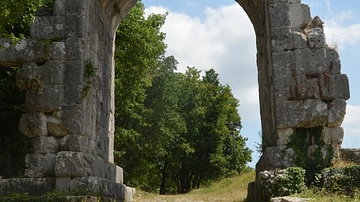
Image
Arch of San Damiano in Carsulae, Italy
The Arch of San Damiano was the northern gate to the city of Carsulae (Italy). It was built under Augustus between 27 BCE and 14 CE at the same time as the Via Flaminia was repaved. The Arch of San Damiano originally consisted of three arched...
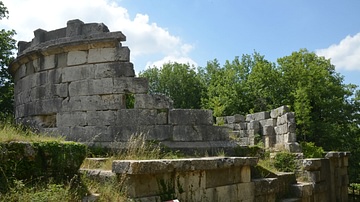
Image
Circular Mausoleum in Carsulae, Italy
This circular mausoleum at Carsulae (Italy) dates to the 1st century CE. It was built by cutting into a limestone crag and constructing a terrace wall in limestone opus quadratum. The tomb likely belonged to the Furia family. An inscription...
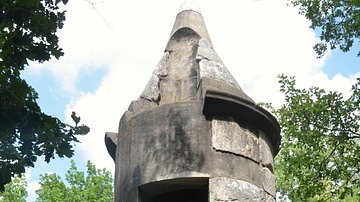
Image
Tower Tomb in Carsulae, Italy
The so-called Tower Tomb at Carsuale (Italy) is a mausoleum dated to between the 1st century BCE-1st century CE. Its lower structure is a quadrangular base 4.3 metres (14.1 ft) square and 2.4 metres (7.8 ft) high. Above the base, a hollow...
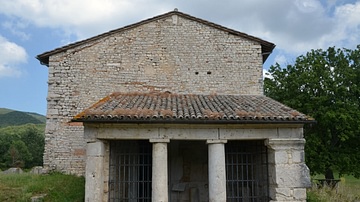
Image
Church of Saints Cosma and Damiano in Carsulae, Italy
The early Christian church of Saints Cosma and Damiano at Carsulae (Italy) was built in the 11th century CE, reusing an existing Roman building. The original Roman building dates to the 1st or early 2nd century CE.
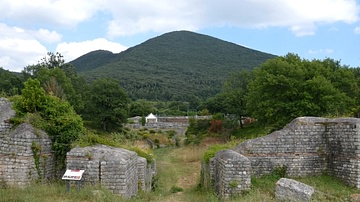
Image
Roman Amphitheatre of Carsulae, Italy
The Amphitheatre and theatre of Carsulae (Italy) formed a linked complex surrounded by a paved court. The Amphitheatre was built after the theatre in the 1st century CE to stage animal fights and gladiator battles.
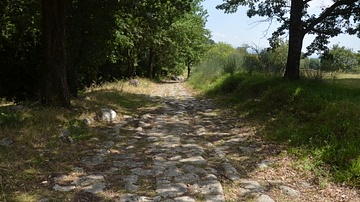
Image
Via Flaminia at Carsulae, Italy
The Via Flaminia is the second oldest Roman road after Rome’s Via Appia. It was a consular road, funded by the state, and built c. 220 BCE to link Rome with the northern coastal city of Ariminum (Rimini) over the Apennine Mountains. The Via...

Image
Twin Temples at Carsulae, Italy
The twin temples at Carsulae in Italy stood on the southern side of the city's forum. Today, only the podiums lined with pink stone slabs remain. The access of the temples was by a flight of steps partly reconstructed. While the divinities...
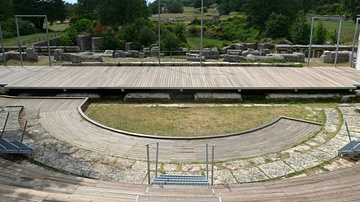
Image
Roman Theatre of Carsulae, Italy
The Roman Theatre at Carsulae (Italy) was built entirely above ground level. It rested on a solid concrete fill with the upper cavea built on a structure of 15 wedge-shaped barrel-vaulted chambers. It has been partially reconstructed.
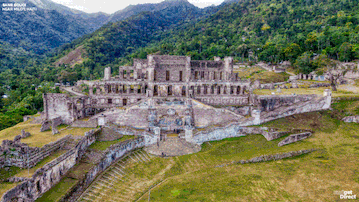
Image
Sans-Souci Palace, Haiti - Reconstruction
Revolutionary general Henry Christophe declared himself king over northern Haiti in 1811. According to one perspective, "Henry I" was a tin-pot dictator who forced his fellow Haitians back into virtual slavery and plunged the nation into...
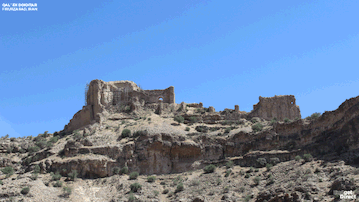
Image
Qal'eh Dokhtar Palace, Fizurabad, Iran - Reconstruction
Qal’eh Dokhar was built by Ardašīr I as a “barrier fortress” during his 3rd century founding of the Sasanian Empire in Iran. The fortress’s third floor housed his royal residence but was eventually supplanted by a greater palace he built...